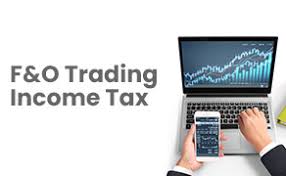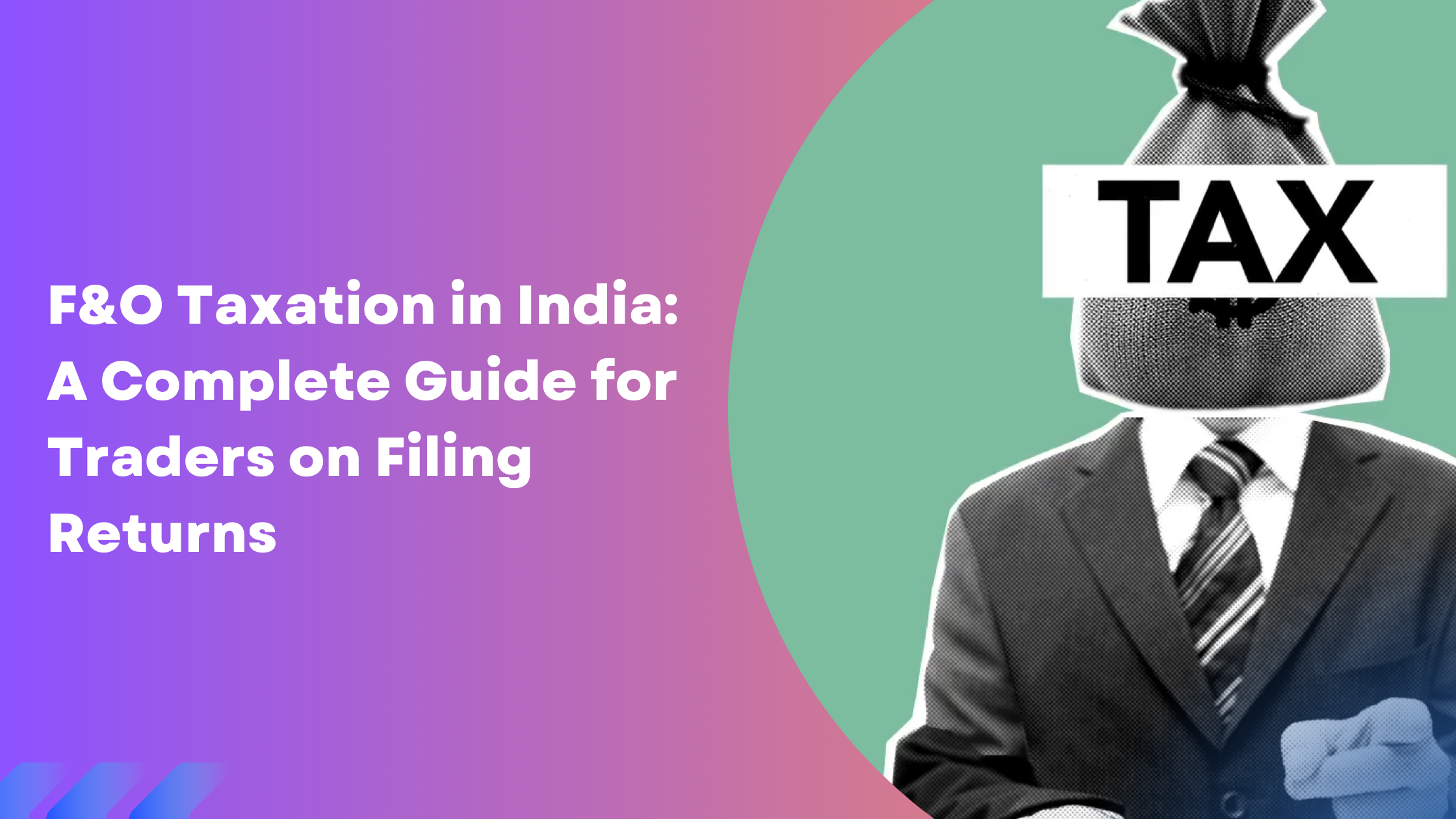For years, F&O traders faced tax audits simply because their turnover exceeded ₹10 Crore. This was due to the formula used for calculating trading turnover, which included option premiums, often resulting in inflated figures that necessitated a tax audit. However, the formula has recently been updated. Now, only the positive and negative differences from trades will be considered in turnover calculations. This change significantly reduces the reported turnover for F&O transactions, potentially eliminating the need for a tax audit.
If you’re an F&O trader struggling to understand the tax implications of your trades, keep reading for a clear and straightforward explanation.
Reporting Your Gains (Losses) from F&O Trades in Your ITR
Many taxpayers involved in F&O trading often overlook including their F&O trading details in their tax returns. This oversight can stem from a lack of awareness, but it’s crucial to declare all sources of income. Failing to disclose this information can lead to a notice from the tax department, as they now have access to all stock market transactions conducted by taxpayers.
If you have incurred losses from F&O trading, reporting these losses can offer tax benefits, which we will explore in detail later.
Income Head: Reporting F&O Trading as Business Income
According to Section 43(5) of the Income Tax Act, income or loss from F&O trading is categorized as non-speculative business income. Consequently, you must declare profits or losses from F&O trading under the “Profits & Gains from Business and Profession” (PGBP) head in your tax return.
Which ITR to File for Reporting F&O Income?
If you’re involved in Futures & Options (F&O) trading, you must report your profits or losses under business income. This necessitates using the ITR-3 form, which is specifically designed for individuals earning income from business or profession (PGBP).
When you file your taxes with us, there’s no need to worry about selecting the appropriate ITR form. Our system automatically chooses the correct form based on your income details and other pertinent information.

Understanding the Taxability of Various Investments
Beyond F&O trading, you might engage in intra-day trading, or make long-term or short-term investments. Each of these activities has distinct tax implications:
- Intra-day Trading: This is classified as a speculative business, separate from F&O trading. The income or loss from intra-day trading must be calculated independently.
- Short-term Trading: If you frequently trade in equity shares, the gains from these activities could be considered either business income or capital gains. It’s crucial to select a basis for this classification and apply it consistently across financial years.
- Long-term Investments: For those with long-term equity investments or fewer short-term equity trades, the gains from these are generally treated as capital gains.
Should F&O Traders Maintain Accounting Records?
If your F&O trading is classified as a business, you need to be aware of certain tax regulations regarding accounting records.
For individuals or Hindu Undivided Families (HUFs) running a business, the requirement to maintain accounting records arises if:
- Your income exceeds Rs 2.5 lakhs, or
- Your turnover exceeds Rs 25 lakhs in any of the three preceding years, or in the first year for a new business.
As an F&O trader, these rules apply to you as well. However, your bookkeeping can be relatively straightforward. Generally, maintaining your trading statements, expense receipts, and bank account statements will be sufficient.
Audit and Return Filing for F&O Traders
Anyone running a business must have their accounts audited if their turnover exceeds Rs. 1 crore in the previous year. This threshold increases to Rs. 10 crores if cash receipts and payments do not exceed 5% of the total receipts or payments.
To determine whether a tax audit is necessary, calculating your trading turnover is essential.
How to Calculate F&O Turnover?
Turnover for F&O Trading = Absolute Profit
Absolute turnover is the sum of all positive and negative differences from your trades.
Note: As of the eighth edition of the guidance note dated 14/08/2022 (applicable from Assessment Year 2022-23), the calculation for options trading turnover has been updated. Previously, options trading turnover included “Absolute Profit + Premium on Sale of Options.”
Example: Amit buys 100 units of Futures at Rs 200 and sells them at Rs 210. He also buys 200 units of options at Rs 300 and sells them at Rs 290.
Here’s how his turnover would be calculated:
Particulars | Calculation | Amount |
Futures | (210-200) * 100 | 1000 |
Options | (290-300) * 200 | 2000 (negative ignored) |
Total Turnover (Absolute Profit) | 3000 | |
Is Tax Audit Applicable for F&O Trading Under Section 44AB?
F&O traders often face confusion regarding the applicability of a tax audit. Let’s clarify the tax provisions to understand better.
Section 44AB: Tax Audit This section outlines the requirements for a tax audit. If your business turnover exceeds specific thresholds, you are required to have your accounts audited.
Note: The detailed tax provisions can be complex. If you find them overwhelming, feel free to skip to the next paragraph where we discuss the applicability of a tax audit for F&O trading.
Section 44AB(a) | If the total turnover of a person carrying on business exceeds Rs. 10 crores, they are required to have their accounts audited. (The threshold of Rs. 1 crore will not apply in the case of F&O trading as 95% or more of the transactions are digital) |
Section 44AB(e) | Tax Audit is necessary if Section 44AD(4) becomes applicable AND the taxable income is more than the basic exemption limit |
Tax audit applicability for F&O trading also involves Section 44AD. Let’s explore the relevant portions of this section.
Section 44AD(1) | An individual or entity with a turnover of up to Rs 2 crores has the choice to declare their taxable income at 6% of their total turnover. |
Section 44AD(4) | Once an assessee chooses the presumptive tax scheme as per section 44AD(1), they are obligated to remain within the scheme for the next five years. If the assessee wishes to discontinue the scheme and declare income or losses lower than the presumptive rate in the current year, then tax audit is mandatory under section 44AB(e). |
Tax Audit Applicability for F&O Traders
Tax audit applicability for F&O traders depends on their trading turnover. Based on the relevant tax provisions, we can conclude that a tax audit is applicable in the following cases:
- Trading Turnover up to INR 2 Cr
- Tax Audit Applicable: If the profit or loss from F&O trading is less than 6% of the trading turnover, and you have opted out of the presumptive taxation scheme in any of the last 5 years, and your total income exceeds the basic exemption limit. (Section 44AB(e))
- Tax Audit Not Applicable: If the profit is equal to or greater than 6% of the trading turnover.
- Trading Turnover between Rs 2 Cr and Rs 10 Cr
- Tax Audit Not Required: If the trading turnover is within this range and more than 95% of transactions are carried out digitally, a tax audit is not required, regardless of profit or loss. (Section 44AB)
- Trading Turnover of more than INR 10 Cr
- Tax Audit Applicable: A tax audit is required regardless of profit or loss. (Section 44AB(a))
Understanding these criteria can help F&O traders determine when a tax audit is necessary.
F&O Losses – Provisions for Set-off and Carry Forward
If you have incurred losses in F&O trading, one of the main reasons to file your ITR is to carry forward these losses. You can offset F&O losses against your income for the next eight years, reducing your future tax liability.
However, it’s important to note that these losses can only be set off against non-speculative income in subsequent years.
F&O Trading Losses:
- Considered non-speculative losses.
- Can be carried forward and offset against non-speculative income for up to eight years.
Intra-day Stock Trading Losses:
- Considered speculative losses.
- Can only be offset against speculative income.
- Unadjusted speculative losses can be carried forward for up to four years.
Filing your ITR allows you to take advantage of these provisions, helping to mitigate tax liabilities in future financial years.
Can Expenses be Claimed by F&O Traders?
Yes, F&O traders can deduct business expenses from their F&O income. This is permissible even if you have incurred losses from F&O trading.
Ensure that you claim only those expenses that are directly and exclusively related to your trading business. Eligible expenses may include:
- Brokerage fees
- Broker’s commission
- Subscriptions to trading-related journals
- Telephone bills
- Internet costs
- Consultant charges for professional advice
- Salary for individuals hired to assist with your business
It’s important to maintain proper records of receipts and bills. Additionally, it’s advisable to make payments through digital means rather than cash.
Important Considerations:
- Expenses exceeding Rs 10,000 in cash may not be eligible for deduction.
- For expenses that are both personal and business-related, claim a reasonable portion that can be attributed to the business.
Proper documentation and adherence to these guidelines will ensure that your expense claims are valid and can help reduce your taxable income.
Example of Claiming Expenses for F&O Trading
Scenario: Amit works with ABC Ltd and earned a salary of Rs 15 lakh in FY 2017-18. He has a trading account with the following expenses:
- Enrolment Charges: Rs 5,000
- Brokerage Charges: Rs 98,000
- Telephone Expenses: Rs 36,000 (50% related to F&O trading)
- Internet Bill: Rs 1,200 per month
Amit incurred an F&O loss of Rs 3 lakh and his total turnover was Rs 30 lakh.
F&O Expense Details:
- Enrolment Charges: Rs 5,000
- Brokerage Charges: Rs 98,000
- Telephone Expenses: Rs 18,000 (50% of Rs 36,000)
- Internet Bill: Rs 14,400 (Rs 1,200 * 12 months)
Amit must report his F&O trading as a business.
Expenses of F&O Business
Brokerage enrollment charges | 5,000 |
Brokerage charges paid | 98,000 |
Telephone expenses | 18,000 |
Internet | 14,400 |
Total | 1,35,400 |
Income (loss) from F&O
Loss from F&O | Rs 3,00,000 |
Less: expenses of F&O | Rs 1,35,400 |
Total F&O loss | Rs 4,35,400 |
Total taxable income of Amit
Salary Income | Rs 15,00,000 |
Rental income | Rs 3,50,000 |
Interest income | Rs 80,000 |
Non-speculative loss | Rs 4,35,400 |
Total taxable income | Rs 15,00,000 |
Loss to be carried forward | -Rs 5,400 (-4,35,400 + 3,50,000 + 80,000) |
Should F&O Traders Opt for the New Tax Regime?
F&O traders have the option to choose the new tax regime under Section 115BAC of the Income Tax Act. Here are some key points to consider:
- Tax Calculation: Under the new tax regime, tax liability is calculated based on the slab rates introduced in this regime.
- Deductions: Traders opting for the new tax regime cannot claim deductions under Chapter VI-A, such as 80C, 80D, etc.
- Switching Regimes: Traders engaged in business activities who choose the old tax regime can switch to the new regime only once in their lifetime. To opt out of the new tax regime, Form 10-IEA must be filed.
F&O traders should evaluate these points to determine if the new tax regime is beneficial for their financial situation.
Disclaimer: The materials provided herein are for informational purposes only and do not constitute legal, financial, or professional advice. Consult relevant laws and experts before acting on this information. Neither the author nor K M GATECHA & CO LLP is liable for any inaccuracies or omissions. This material is purely educational and not an advertisement or solicitation.

Table of Contents
Toggle

